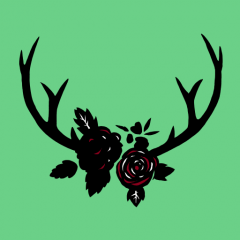This month’s Carnival of Aro is on Education. It was nice to reflect on my experiences in school as an aromantic and the role that education plays in the community.
Word count: 728
Reading time: Approximately 3-4 minutes
Seeing as I’m in my third year of a PhD (and therefore in my 20th year of formal education), education is certainly a fundamental part of my life and daily experience. As an aro, middle and high school were rather alienating at times. I remember one time in orchestra we were told to play like we were in love. Another time in a class, a teacher asked us to raise our hands if we had ever been in love so that he could relate that feeling to the experience of addiction. I felt out of place as my classmates and friends were becoming obsessed with getting a romantic partner. Whenever we had to read books in my literature classes, I dreaded the thought of the mandatory reading containing romance. Sex education was basically non-existent where I grew up, but it was definitely super heteronormative and very abstinence-focused, so of course it was all “when you get married…” I definitely felt different, but at the time, I thought I was simply mature for not going “boy crazy.”
I wish that I would have learned about aromanticism when I was younger as it would have explained a lot and made things clearer earlier on. I first came across the term aromantic in my late teens but there was so little information available that I dismissed it. I then came across asexuality in an elective course I took in college. While I no longer identify with asexuality, it’s what brought me back to aromanticism. I think about how my life might be different if I didn’t take that one random course for fun. I would have found aromanticism eventually, but how much longer would it have taken? I learned a lot in the course in terms of course content but also about myself.
Education doesn’t have to only occur in formal educational settings, however. This is especially true of education on aromantic issues. I’ve been realizing the importance of knowledge and education outside of formal institutions. We are all knowledge-makers. There’s a lack of academic research or knowledge on aromanticism, which is a shame. At the same time, the aromantic community has produced so much knowledge through the community. Tumblr was my primary source of learning about aromantic topics. Reading about people’s experiences has been instrumental. It’s great that there are basic informative materials, but being able to see real-life examples as expressed through personal experiences was so helpful because it makes ground informative materials in reality. Information from aro 101 pamphlets are brought to life by the posts of people explaining what their aromanticism means to them. It’s also wonderful how folks will just create surveys. It may not be academic research, but it gives us a lot of important information nonetheless. We are creating our own records and history by posting about our experiences, creating resources and infographics, and conducting community surveys.
There are still many more resources we need. I wish there were more formal educational resources on the societal/systematic impact on aromantics. Learning that it’s society that has issues (read: amatonormativity) rather than me helped me in embracing my aromanticism. Having such resources could be so helpful for someone who is questioning or has newly identified as aromantic. I also think it’s important for helping folks outside the community understand our struggles. We also need more educational resources that are intersectional. Information on the intersection between aspects like neurodivergence or racism and aromanticism are important as they capture the nuances of the lived experiences of many aros.
Inspired by all the education and resources that other aromantic folks create, I’ve also started creating my own educational resources. One I’m really proud of is my “Challenging Amatonormativity” guide, which teaches about amatonormativity and how to unlearn it as it greatly affects aros. I also collaborated with a fellow aro on developing a webinar on aromantic competent care for mental health care providers! We hosted the webinar and have now made a recording in the hopes that it can inform care providers on how to better interact with aromantic clients. I’m not sure what’s next on my list, but I definitely want to continue being involved in education about aro topics.
I’m curious to see what else I will learn from this community and am looking forward to seeing information on aromanticism in formal educational settings as well.


